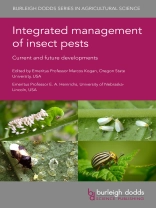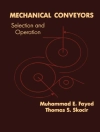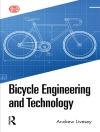- Particular focus on advances in understanding insect species and landscape ecology, which provide the foundations for effective IPM
- Covers latest research on classical, conservation and augmentative biological control
- Reviews key developments in use of entomopathogenic fungi, viruses and nematodes
Table des matières
Part 1 Ecological foundations of IPM
1.Foundations of an IPM program: detection, identification, and quantification: Michael E. Irwin, University of Illinois, USA; and Wendy Moore, University of Arizona, USA;
2.Advances in understanding species ecology: phenological and life cycle modeling of insect pests: Leonard Coop and Brittany S. Barker, Oregon State University, USA;
3.Understanding agroecosystems and pest management: from chemical control to integrated biodiversity management: Keizi Kiritani, formerly National Institute of Agro-Environmental Sciences, Japan;
4.Advances in understanding agroecosystems ecology and its applications in integrated pest management: Casey Hoy, Ohio State University, USA;
5.Advances in understanding the ecology of invasive crop insect pests and their impact on IPM: Robert Venette, USDA Forest Service, USA; and Amy Morey, University of Minnesota, USA;
6.Plant-insect interactions, host-plant resistance, and integrated pest management: Michael J. Stout, Louisiana State University Agricultural Centre, USA;
Part 2 Cultural and physical methods in IPM
7.Advances in breeding crops resistant to insect pests: rice as a paradigm: E. A. Heinrichs and John E. Foster, University of Nebraska-Lincoln, USA;
8.The role and use of genetically engineered insect-resistant crops in integrated pest management systems: Steven E. Naranjo and Richard L. Hellmich, USDA-ARS, USA; Jörg Romeis, Agroscope, Switzerland; Anthony M. Shelton, Cornell University, USA; and Ana M. Vélez, University of Nebraska-Lincoln, USA;
9.Biotechnology applications for integrated pest management: Ruth Mbabazi and Karim Maredia, Michigan State University, USA;
10.Advances in physical control methods in IPM: Charles Vincent, Agriculture Agri-Food Canada Saint-Jeansur-Richelieu, Canada; Guy Hallman, Phytosanitation, Oceanside, USA; Phyllis Weintraub, Gilat Research Center, Israel; and Francis Fleurat-Lessard, Gradignan, France;
11.Robot-enhanced insect pest control: reality or fantasy?: Linton Winder, The BHU Future Farming Centre, New Zealand; and Rory Flemmer, Junior Enterprises, New Zealand;
Part 3 Biological methods in IPM
12.Advances in classical biological control to support IPM of perennial agricultural crops: Ivan Milosavljević and Mark S. Hoddle, University of California-Riverside, USA;
13.Advances in conservation biological control and habitat management for IPM: Prisila A. Mkenda, Charles Sturt University, Australia and The Nelson Mandela African Institution of Science and Technology, Tanzania; Sunita Pandey and Anne C. Johnson, Charles Sturt University, Australia and Graham Centre, Australia; and Geoff M. Gurr, Charles Sturt University, Australia, Graham Centre, Australia and Fujian Agriculture and Forestry University and Ministry of Education, China;
14.Advances in augmentative biological control in integrated pest management: Joop C. van Lenteren, Wageningen University, The Netherlands; and Vanda H. P. Bueno, Federal University of Lavras, Brazil;
15.Integrated pest management (IPM) in greenhouse and other protected environments: Margaret Skinner, Cheryl Frank Sullivan and Bruce L. Parker, University of Vermont, USA;
16.Advances in microbial control in integrated pest management: entomopathogenic fungi: Travis Glare and Aimee Mc Kinnon, Lincoln University, New Zealand; Roma Gwynn, Rationale, UK; and Michael Brownbridge, Vineland Research and Innovation Centre, Canada;
17.Advances in microbial control in IPM: entomopathogenic viruses: Sean Moore, Citrus Research International and Rhodes University, South Africa; and Michael Jukes, Rhodes University, South Africa;
18.Advances in use of entomopathogenic nematodes in integrated pest management: David Shapiro-Ilan, USDA-ARS, USA; Selcuk Hazir, Adnan Menderes University, Turkey; and Itamar Glazer, Volcani Center, Israel;
Part 4 Chemical methods in IPM
19.Chemical control in IPM systems: advances in selective pesticides and application systems: Graham Matthews, Imperial College London, UK;
20.Ecological impacts of pesticides and their mitigation within IPM systems: Linda J. Thomson and Ary A. Hoffmann, University of Melbourne, Australia;
21.Monitoring and minimizing health risks related to pesticides: Keith Tyrell, Pesticide Action Network UK (PAN UK), UK; Sheila Willis, Pesticide Action Network UK (PAN UK), UK and University of Cape Town, South Africa; Stephanie Williamson, Pesticide Action Network UK (PAN UK), UK; Davo Simplice Vodouhe, Organisation Béninoise pour la Promotion de l’Agriculture Biologique (OBEPAB) and Université d’Abomey-Calavi, Benin; and Anthony Youdeowei, Pesticide Action Network UK (PAN UK) and University of Greenwich, UK;
22.Peptide-based biopesticides: Shireen Davies, Rob Liskamp and Julian Dow, University of Glasgow, UK;
Part 5 Implementation
23.Integrated pest management (IPM) of nematodes: Hendrika Fourie and Dirk De Waele, North-West University, South Africa;
24.Integrated pest management of mites: Oscar E. Liburd, Lorena Lopez, Daniel Carrillo, Alexandra M. Revynthi and Omotola Olaniyi, University of Florida, USA; and Rana Akyazi, Ordu University, Turkey; 25.Economic assessment of integrated pest management (IPM) implementation: George B. Frisvold, University of Arizona, USA;
26.The synergism of biocontrol and plant resistance: a path to advance IPM to higher levels of integration: Marcos Kogan, Oregon State University, USA;
A propos de l’auteur
Professor Travis Glare is CEO of Lincoln Agritech Ltd. and Professor of Applied Entomology at Lincoln University, New Zealand. He has an international reputation and has published widely in the field of entomopathogenic microbes and use of biopesticides. He has worked on a range of international projects to develop novel biopesticides.












